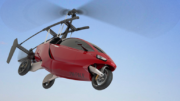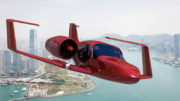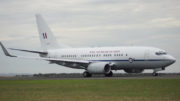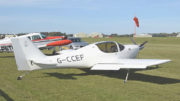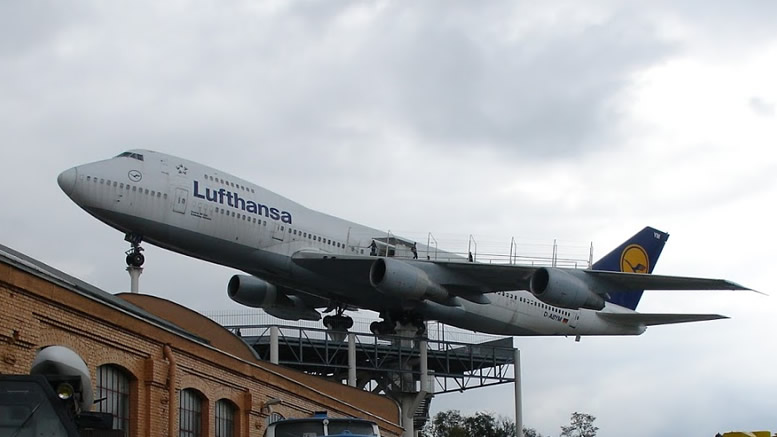
The Boeing 747, also popularly known as the jumbo jet, was the largest passenger airliner for 35 years, a title only recently given to the new Airbus A380 which will be able to carry 55 extra passengers. The four-engined 747 combines passenger-carrying capacities of up to 450 people with its unique two-deck configuration (the small upper deck is usually used for business-class passengers), with high-subsonic speeds (0.85 Mach or 565 mph) and intercontinental range (8,430 statute miles, or 13,570 km, for the 747-400 version), in some configurations sufficient to fly Sydney-London non-stop (though no airline schedules such long routes). By July 2003, a total of 1372 aircraft have been built or ordered in various 747 configurations.
The first edition of the jet, the 747-100, rolled out of the Boeing factory in Everett, Washington, USA on 2 September 1969. This factory is the largest building ever built. The 747-100 entered service in 1970. It was later replaced by the 747-100B, a very similar aircraft with a stronger airframe and undercarriage design. Another -100 variant, the 747-100SR, has a capacity of up to 550 passengers and is used on domestic flights in Japan.
747-100 aircraft can usually be distinguished by their upper deck, which has only three windows. The 747-100 was later upgraded to improve performance now known as the 747-200 it could fly 30% further, it initially was released with eight upper windows only. However, some airlines have recently purchased “SUD,” or “stretched upper deck” modifications, which make the upper deck almost identical to a 747-300’s.
The 747-200 was replaced with the 747- 300 which along with performance improvements introduced the stretch upper deck. The 747-400 is the latest model of the 747, and also the only series still in production. It added winglets, new flight decks and in-flight entertainment to the basic design of the 747-300 series. The Japanese domestic variant, the 747-400D, is the highest-capacity passenger aircraft in the world, capable of carrying 568 passengers.
One other variant of the 747, the 747SP was released in 1976, It sacrificed capacity for speed and range: although only 220 passengers could fit in a 3-class cabin, the aircraft could fly up to 10,200 miles at speeds of up to 610 mph. Boeing designed the aircraft specifically for carriers of the trans-South Pacific routes like Qantas and American Airlines who used the planes for long haul flights.
Boeing is now working with airlines to create a new 747 called the Boeing 747 Advanced which will use same engine and cockpit technology as the new 787. The new 747 will be quieter, more economical and more environmentally friendly. It will be able to carry up to 500 passengers in a 3-class configuration and fly over 8,000 nautical miles (14,816 km) at .86 Mach. Boeing is hoping there upgrades to make the 747 more economical will be enough to keep airlines from buying the new rival the Airbus A380.

